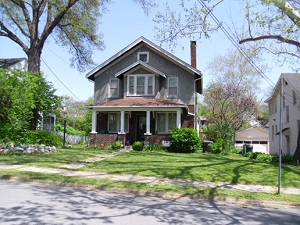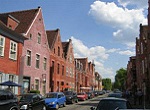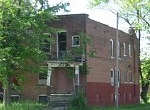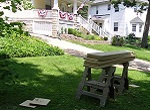A Housing Condition Survey Can Help You Visualize Areas Needing Most Attention
Last Reviewed: June 20, 2024
A housing condition survey is a time-honored technique often undertaken in conjunction with a housing element of a comprehensive plan, a specialized housing plan for a city, a needs assessment for a grant application or for the federal Community Development Block Grant program in the U.S., or a neighborhood plan. If you don't understand the term we just used, an "element" of a comprehensive plan can be thought of as a chapter.
But the good news is that in our experience, you don't have to wait for your city or town to act; your group can do your own homespun version and reap most of the benefits of what professionals or consultants do. We have seen community development corporations, nonprofit housing developers, and neighborhood associations benefit from such a survey.

The housing condition survey looks at the exterior of either all residential properties in an area of interest, or at a random sample of properties, depending on the size of the area, any available funding, and person power. Sometimes volunteers conduct the survey, and this is perfectly appropriate if the volunteers are trained and provided with written directions, and if rating choices are limited so that volunteers will get it right most of the time.
Just be realistic about how many volunteers you will have, their dedication to the task, and the amount of time it will take. I saw a neighborhood association merrily take on this project, only to find eight months later that only a couple of board members were really interested in the project. So do beware.
Be aware that funding sources are likely to frown on the volunteer-led survey, so this approach is most useful when the neighborhood itself is the primary audience for the results.
Some Considerations for Planning Your Housing Condition Survey
First, you will want to make sure that every property address is noted correctly on a survey form before sending out the field team, unless you do not have access to that information and need to collect it. In the very rare event that your town is lacking this basic information, ask at the post office about their available data or ask utility providers. Also note whether the residence is a single-family dwelling or has an identifiable number of units more than one.
Second, if you are able to obtain the cooperation of the city government, the city should complete some blanks on the applicable zoning district and whether there are known zoning violations at the property, number of occupants if known, and any outstanding code violations. If you don't have a working partnership with the city government, you simply will not be able to include this information in your otherwise viable survey.
Third, typically the housing condition survey contains a checklist of possible problems with the house. We are going to assume that the people performing the survey are either volunteers, interns, planners, or some other employee that does not have a detailed background in structural analysis. If the field crew is more well versed in structural appraisal, the questions can become much more sophisticated.
We maintain that in most cases, that additional level of detail is not necessary. Our rationale for this brash statement is that the maintenance level of the exterior paint job is likely to be highly correlated with whether a crack in the foundation is attended to. There are many exceptions, of course, the most notable being an area of seismic activity or recent storm damage, where the structural integrity of the building may be the main story.
In the event of natural disaster recovery, you are highly advised to find skilled inspectors if you are undertaking a housing condition survey on which funding decisions will be based.
Note that housing condition surveys are conducted from the sidewalk or edge of the property in almost all cases. A few cities may have laws in place that allow their inspector employees to enter an occupied home, but this is increasingly rare. So this is a sidewalk survey, and sometimes can be performed effectively as a windshield survey. (Windshield survey is the term for when some type of planning-related survey can be done without getting out of the car.) In denser neighborhoods, though, we recommend that you insist that the survey takers travel on foot for a better look.
If money and time are limited, you could opt for a windshield survey with a sidewalk survey on randomly selected blocks. Whether professional or volunteer, we recommend that the survey team travel in pairs. This makes the work go faster, because one can drive or navigate, and the other can act as note taker. Also in some neighborhoods, safety will be a concern.
Sample Housing Condition Survey Questions
OK, let's go on to the promised sample questions. Groups we have worked with have been most successful when they divide the observations up into logical categories, which in most places would be as follows:
- Roof. Questions might probe whether shingles or tiles are intact, whether there is any obvious sag or collapse, and whether the survey note taker can see any visible areas where patching is needed.
- Exterior Walls. Questions might include whether siding (or other minor areas such as window frames or soffits) needs painting, whether siding material other than wood is in poor condition or has holes, and whether there is any obvious bowing of a wall. Determine with all your team members how you will regard paint that is merely peeling or blistering as opposed to missing almost entirely.
- Windows. Ask if any windows are broken or cracked, and whether the survey crew notices any other problem with windows. If all or some windows are boarded up, of course that should be noted.
- Doors. The survey form could ask whether any door has been tampered with or kicked in, is sagging so much as to not be usable, or in any other way has become dysfunctional.
- Porches. Frequently porches on wood frame houses are a good indicator of the homeowner's general approach to maintenance. A porch with a sagging floor, or a porch that is pulling away from the rest of the structure, needs attention. Condition of steps and handrails also should be noted.
- Foundation. Unless you have well-trained survey administrators, you will want to confine yourself to asking if there are any visible cracks or holes in the foundation.
- Chimneys. Leaning chimneys or missing bricks should be noted, as should missing flashing around the base of the chimney.
- Outbuildings, including Garages. Depending on level of detail desired, you can ask the same questions about outbuildings, or ask the more general question of whether a garage or shed appears to be functional.
- Accessibility. Although survey takers may not be able to see every exit from the sidewalk or street, they might note whether or not it is possible to enter the home without using steps.
- Driveway. Note what the surface material is, and whether it contains cracks or defects that would seem to threaten its integrity.
- Sidewalk. While strictly speaking, in some places the sidewalk is the responsibility of the municipal government and not the homeowner, it is very easy to note sidewalk condition. We know of a case where a neighborhood that included notes on sidewalks in its housing survey was in the ideal situation when the city unexpectedly released a call for neighborhood proposals for sidewalk repairs. Relevant variables will be missing sections, broken surfaces, and areas where tree roots are pushing up the sidewalk or where soil conditions are causing subsidence.
- Occupancy. If vacancy is not much of a problem in your neighborhood, this may not be worth the time it takes to note, but in most highly urban areas it is valuable to know if the unit appears vacant.
- General Maintenance. You may need a series of questions in declining neighborhoods, or only a general place to note any problems such as accumulated trash, inoperable vehicles stored on the property, boats or RVs or even automobile storage outdoors in excess of what is allowed by code, fences that are leaning or missing in sections, unruly vegetation or weeds, dangerous trees or limbs, animals not permitted by code, feral cats or stray dogs, or other issues for the neighborhood.
We have a few words of wisdom for you about the construction of the survey, based on our many experiences with both professional and volunteer-led housing condition assessments.
As in all research, begin with the end in mind. How will you analyze the data and present it? Is your user primarily the city government, which will utilize it to develop leads for code enforcement or its community development application? Is this a screening survey for your own information, or will you be presenting it to a funder or a city government for action? If the latter, you will want to be more professional and precise in your questions. If you are mostly trying to understand your own neighborhood better, there are real benefits to leaving the survey a little looser so that the survey takers feel free to simply note anything of interest that the form does not address specifically.
We also suggest that you conduct the survey within one season of the year. If you are in a very leafy neighborhood, there can be real benefits to a winter survey. The disadvantage of course is that you want to avoid snow cover.
Now that we have given the overview of possible questions for your survey form, we also want to assure you that you may be able to do a very meaningful housing condition survey for your neighborhood simply by having volunteers note the following things:
- Address (or if no house number is visible, a description of cross streets and neighboring homes sufficient to pinpoint its location)
- General condition rating, expressed as Above Average, Average, and Below Average.
That in itself can be important, especially in an urban neighborhood where housing maintenance varies widely, or in an older suburb where many properties are well kept and a few are problems. This simple survey should be done very quickly over a period of no more than a couple of months, and results should be tabulated quickly.
In most cases, your real goal should be pinpointing which parts of your neighborhood need the most attention; you are not trying to target individual homeowners. If you are a volunteer group, you can use a simple color coding system to show whether 0-10% of homes on a block were below average, 10-25%, 25-50%, or more than 50% for example. If you have a mostly intact neighborhood, the color coding could be as simple as a color for one house on a block being Below Average, and another color for more than one house on a block Below Average.
If you use volunteers for either a checklist housing condition survey or for the generalized one, in which each home is rated as falling into three to five categories, you must train the volunteers by having them walk through actual blocks. You not only are helping individual volunteers visualize and prepare for the task, but also you are trying to get the volunteers to agree on common standards.
If there is no neighborhood organization, use your concern about housing quality to start a neighborhood association. On the other hand, if a neighborhood organization is well-established, you could use block units to accomplish the survey, again assuming they are well-trained. The survey could provide the rationale for creating or re-energizing block units if none exist.
You also may choose to give some criteria for each rating that you use, and even illustrate those with photos. However you accomplish it, standardization from one rater to another obviously is important to determining whether the entire exercise of the housing condition survey is worthwhile and how much faith to place in the results. Don't skimp on training.
One other tip for composing the housing condition survey form is that in most cases, you can avoid the questions asked by the U.S. Census. Their housing data covers different items, but you should be aware of what is already available to you before you design your own windshield survey, or better yet, walking survey.
We also have omitted any discussion of a wide range of other topics that are often discussed in a housing section of a general plan. The housing condition survey only addresses a narrow range of aspects of the maintenance of an existing residence, and does not touch on characteristics of occupants, utility availability, and many other items of interest. But it is an amazingly valuable tool for neighborhood groups and for planners.
Here's Some Related Reading
- Making and Keeping a Good Community ›
- Housing › Housing Condition Survey
Join GOOD COMMUNITY PLUS, which provides you monthly with short features or tips about timely topics for neighborhoods, towns and cities, community organizations, and rural or small town environments. Unsubscribe any time. Give it a try.




